Sommaire
Le guide des balises de détresse
Il est indispensable de prendre la mer avec les dispositifs de sécurité fiables et essentiels. Parmi eux, entre autres, la VHF, le radeau de sauvetage, le dispositif d’éclairage, et, ce qui va nous intéresser aujourd’hui, la balise de détresse.
La balise de détresse, ou plutôt, dirais-je « les » balises de détresse. En effet, nous verrons, dans cet article, qu’il existe plusieurs sortes de balises de détresse (EPIRB, PLB, MOB, avec AIS, GPS) fonctionnant sur des principes différents (fréquences radio ou satellite) et des technologies complémentaires.
Des différences parfois difficiles à identifier et un choix d’autant moins évident. Alors, qu’est-ce qu’une balise de détresse ? Comment choisir sa balise de détresse ? Quel type de balise de détresse est adapté à vos besoins ?
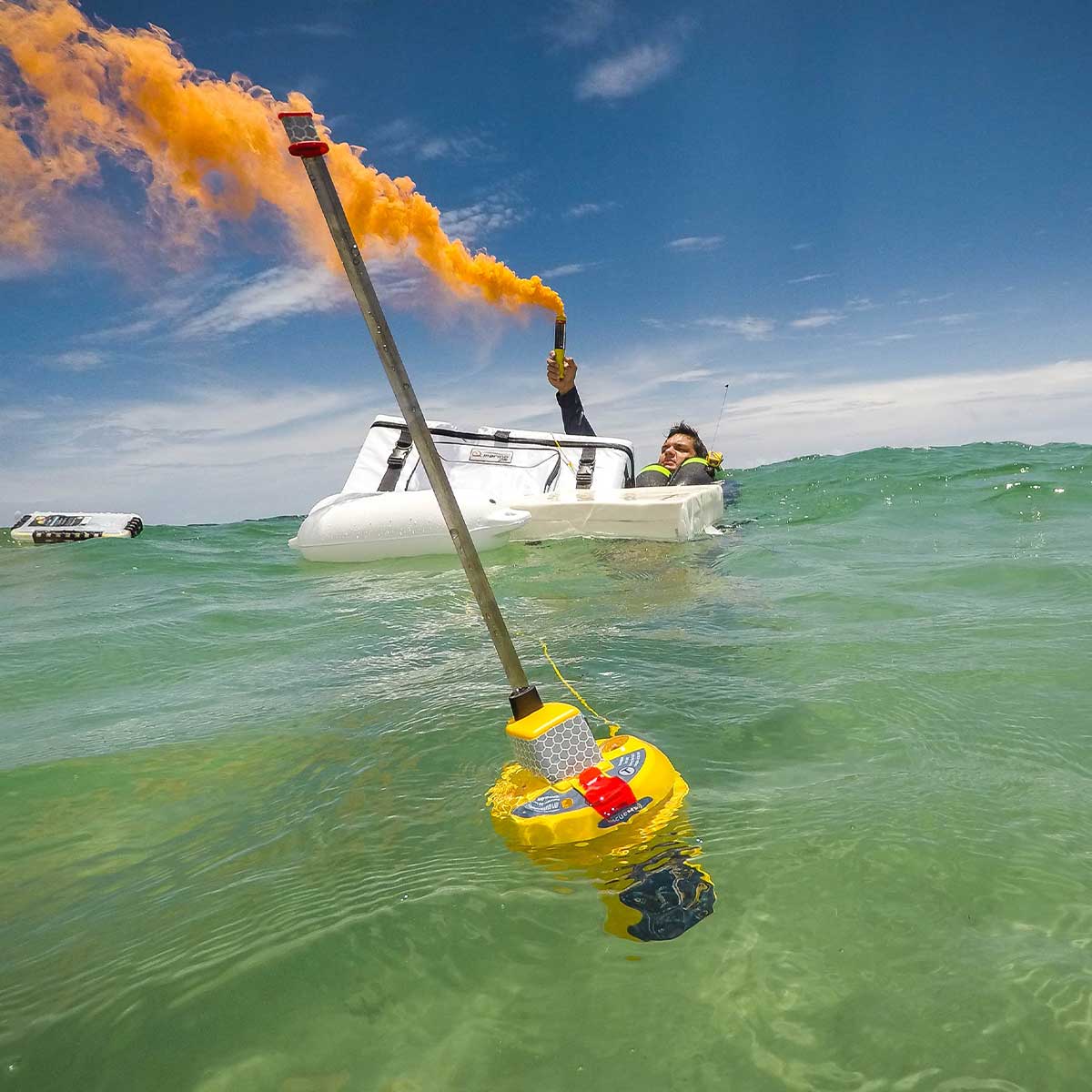
Le guide d'achat des balise de détresse
Il est indispensable de prendre la mer avec les dispositifs de sécurité fiables et essentiels. Parmi eux, entre autres, la VHF, le radeau de sauvetage, le dispositif d’éclairage, et, ce qui va nous intéresser aujourd’hui, la balise de détresse.
La balise de détresse, ou plutôt, dirais-je « les » balises de détresse. En effet, nous verrons, dans cet article, qu’il existe plusieurs sortes de balises de détresse (EPIRB, PLB, MOB, avec AIS, GPS) fonctionnant sur des principes différents (fréquences radio ou satellite) et des technologies complémentaires.
Des différences parfois difficiles à identifier et un choix d’autant moins évident. Alors, qu’est-ce qu’une balise de détresse ? Comment choisir sa balise de détresse ? Quel type de balise de détresse est adapté à vos besoins ?
Qu’est-ce qu’une balise de détresse ?
à quoi sert une balise de détresse ?
La balise de détresse est un dispositif de sécurité permettant de prévenir les autorités maritimes, les services de secours et de sauvetage, ainsi que les usagers de la mer ou les membres d’équipage d’une avarie sur votre navire, d’un chavirage ou d’un homme à la mer. En bref, la balise est le dernier lien vers l’extérieur en cas de naufrage ou d’accident.
Elle peut être fixe et affiliée à un bateau, ou portable et personnelle à chaque membre de l’équipage.
Comme nous le verrons plus loin, les balises de détresse peuvent fonctionner, soit par satellite, soit par VHF (via un signal numérique AIS), mais reprennent toutes les mêmes principes : prévenir d’un incident et renseigner sa position afin de faciliter les recherches.
Comment est organisé le processus d'alerte et de secours ?
Comme vous pouvez le voir sur le schéma ci dessous disponible sur le site du Registre Français des Balises de Détresse, le processus d’alerte et de secours suit un cours très précis dès lors que votre balise de détresse est déclenchée.
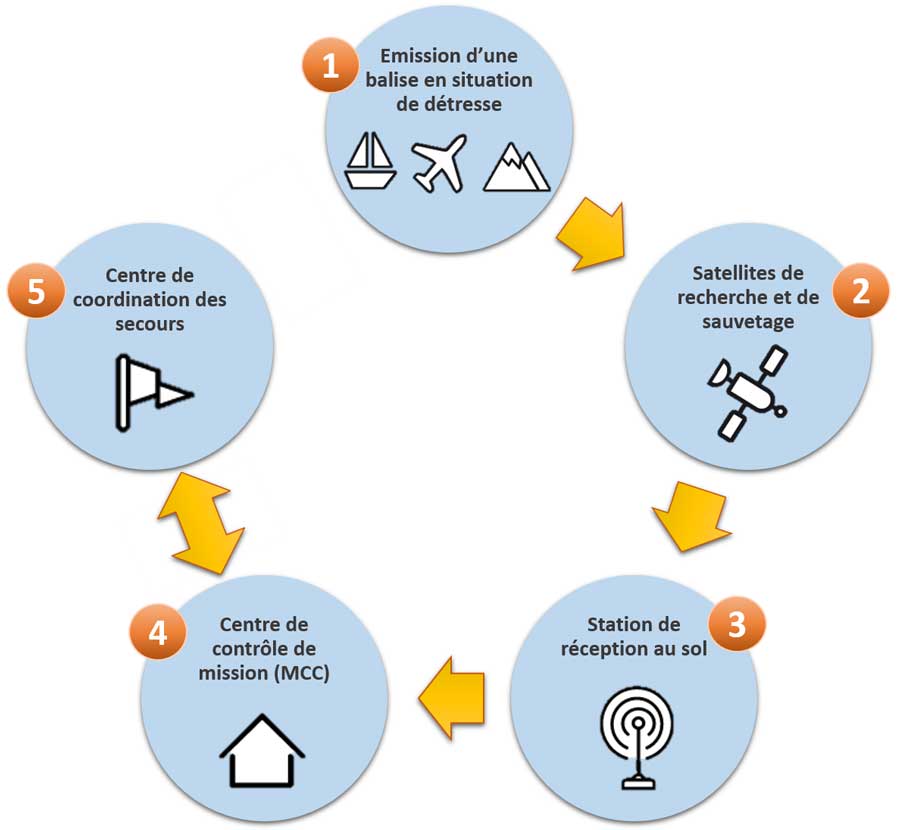
- La balise de détresse fixe émet un signal de détresse.
- Le réseau satellite reçoit le signal 406 MHz
- Le satellite émet une alerte à une station de réception au sol du programme Cospas-Sarsat.
- L’alerte est ensuite acheminée vers un centre de contrôle de mission ou MCC.
- Ce dernier va échanger avec le centre local de coordination des secours.
Les meilleures balises de détresse EPIRB
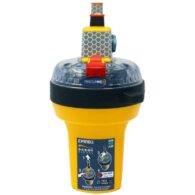
Balise de détresse EPIRB3
La nouvelle balise EPIRB3 RescueMe de Ocean Signal est une balise de sauvetage mondiale à déclenchement manuel intégrant de nombreuses technologies de pointe facilitant considérablement les opérations de sauvetage.
La batterie possède une durée de vie de 10 ans et le GPS est équipé de 72 canaux pour un positionnement ultra rapide. On retrouve également les fonctions d’un émetteur AIS, du RLS (Return Link Service), de lumières stroboscopiques et de la connexion à un smartphone via NFC.
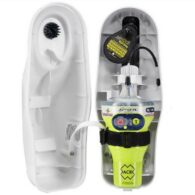
Balise GlobalFix V4 (Cat. I)
Mettez toutes les chances de votre côté et soyez en sécurité en mer en cas de situation de détresse avec la balise ACR EPIRB GlobalFix V4 (cat. I) à déclenchement automatique. C’est la balise de détresse marine de nouvelle conception avec une électronique puissante.
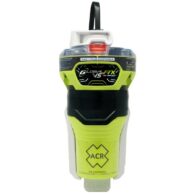
Balise GlobalFix V5 (Cat. II)
Augmentez vos chances de sauvetage avec la toute nouvelle balise ACR GlobalFix V5 (Cat. 2). Il s’agit d’une balise de détresse EPIRB (Emergency Positioning Radio Beacon) à déclenchement manuel prévue pour émettre un signal de détresse afin de bénéficier d’un sauvetage mondial.
On retrouve un récepteur multi-constellation 72 canaux (GPS, Galileo, & Glonass GNSS) pour un positionnement ultra rapide, d’un émetteur AIS, du RLS (Return Link Service), de lumières stroboscopiques et de la connexion à un smartphone via NFC.
Quels sont les différents types de balises de détresse ?
Balise de détresse EPIRB et PLB
Comme vous avez pu le voir dans les dédales de l’internet, il existe plusieurs types de balises de détresse. Nous distinguerons d’abord les deux principales :
EPIRB, ou radiobalise de localisation des sinistres. Ce sont les balises de détresse fixes obligatoires sur tous les bateaux en navigation hauturière souvent fixé sur un largueur hydrostatique.
Ce type de balise de détresse sont affiliées à un seul et unique bateau, dont le numéro MMSI est renseigné dans la balise.
Elles disposent généralement d’un déclenchement automatique au contact de l’eau mais peuvent aussi être déclenchées manuellement, avec une autonomie de 48 heures. Les balises EPIRB sont flottantes et étanches.
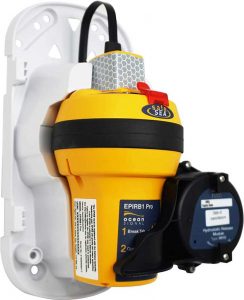
PLB, ou balise de localisation personnelle. Cette fois, la balise n’est pas forcément adossée à un navire et son numéro MMSI mais contient cependant les données personnelles de celui qui la porte, fixée à son gilet de sauvetage.
Plus compacte, son autonomie est également plus faible, avec 24 heures de charge. Elle émet, elle aussi, sur les fréquences 406 MHz et 121.5 MHz.
Ces deux formats de balise de détresse ont toutefois un mode de fonctionnement très voisin et peuvent être équipés de fonctionnalités diverses comme le GPS ou l’AIS.
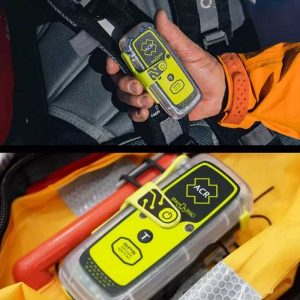
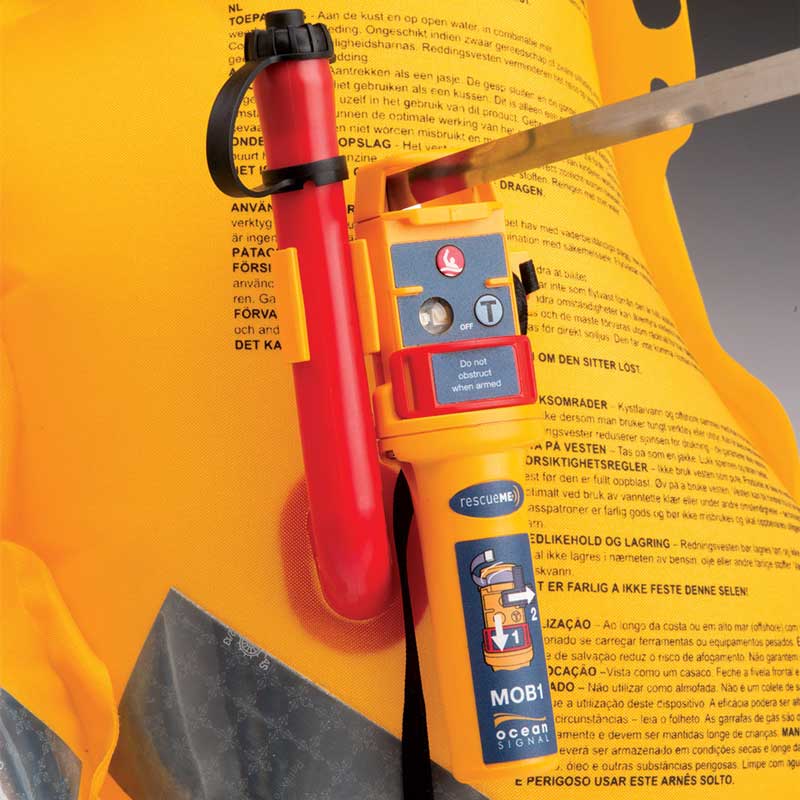
Balise MOB (ou AIS)
Un troisième type de balise de détresse est disponible sur le marché de la sécurité en mer : la balise MOB, ou « man overboard », ou encore, en français, « homme à la mer ».
Cette balise de détresse personnelle utilise la technologie AIS pour signaler un homme à la mer. Elle est en général portée sur le gilet de sauvetage. Le système AIS est un signal numérique transitant par la VHF. De nombreuses informations peuvent être fournies au récepteur, telles que la position, le cap, la vitesse. Grâce à la technologie GPS embarquée, ces données sont très précises. Une fois déclenché, le signal pourra être vu par tous les bâtiments alentour équipés d’un récepteur AIS, avec une portée de 5 milles approximativement.
L’intérêt de la balise AIS personnelle est la possibilité de la coupler avec son propre système AIS et MOB. Pour faire simple : vous disposez, par exemple, d’une VHF fixe AIS. Alors celle-ci va pouvoir vous alerter du passage par-dessus bord d’un marin ou d’un passager, tout en indiquant l’information au pilote automatique, qui va à son tour se mettre en situation d’effectuer une manœuvre d’homme à la mer. De la même manière, un coupe-circuit peut répondre au signal de détresse AIS et stopper le moteur afin de ne pas s’éloigner du naufrager.
Différence entre les types de balises de détresse
|
EPIRB |
PLB |
MOB |
|
|---|---|---|---|
| Signal émis |
Satellite 406 / 121,5 MHz |
Satellite 406 / 121,5 MHz |
AIS (& GPS selon modèle) |
| Autonomie |
48 heures |
24 heures |
24 heures |
| Identification |
MMSI |
MMSI et/ou Code personnel |
MMSI et/ou Code personnel |
| Portée |
Tout le globe |
Tout le globe |
5 milles |
Comment fonctionne une balise de détresse ?
Déclenchement
Les modes de déclenchement des balises divergent quelque peu selon leur nature.
- La balise fixe, ou EPIRB, se déclenche automatiquement à l’immersion : dès 3 mètres de profondeur, le signal commence à émettre. Elle peut cependant être activée manuellement.
A savoir: Les balises fixe sont généralement proposé avec un largueur hydrostatique, c’est une boite qui contient la balise. Si l’utilisateur ne peut pas atteindre la balise EPIRB lors d’un naufrage, celle-ci est libérée de son boitier automatiquement via le largueur hydrostatique une fois atteint une certaine profondeur.
- La balise personnelle, ou PLB comme l’Ocean Signal PLB3, se déclenche généralement manuellement (certains modèles proposent un déclenchement au gonflement du gilet).
- La balise MOB se déclenche automatiquement dès la détection d’un homme à la mer.
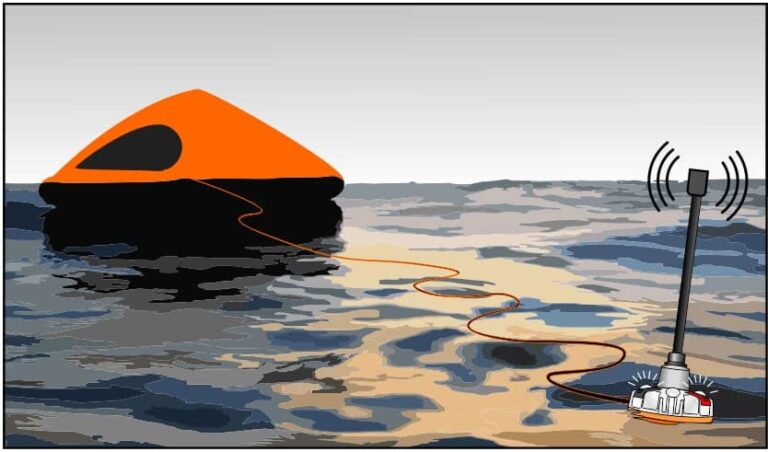
Émission
Les balises de détresse EPIRB ou PLB émettent sur deux fréquences simultanément : la fréquence 406 MHz et la 121,5 MHz. Toutes deux ont un dessein différent, une portée différente et ne sont pas reçues par les mêmes récepteurs.
La fréquence 406 MHz émet un signal capté par le réseau satellite Cospas-Sarsat. Ce réseau mondial renvoie ensuite le signal de détresse à une station terrestre, qui transmettra ensuite au centre de coordination. Pour qu’une balise non pourvue d’une puce GPS puisse être localisée après réception du signal de détresse par un satellite, il faudra attendre la réception de ce même message par d’autres satellites du réseau afin de procéder à une triangulation. Le GPS est donc un réel gain de temps pour la localisation.
La fréquence 121,5 MHz est, quant à elle, accessible aux bâtiments à proximité ainsi qu’aux aéronefs (avions, hélicoptères). Elle permettra une localisation plus fine, réduisant le périmètre de recherche. C’est cette fréquence qui est utilisée lors des manœuvres de sauvetage.
Les meilleures balises de détresse personnelles PLB
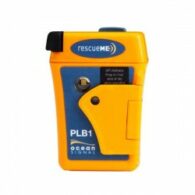
Balise Personnelle PLB1
La balise personnelle PLB1 de Ocean Signal est la PLB la plus compacte du marché. Avec son GPS intégré, elle vous offrira une sécurité personnalisée pour un positionnement ultra rapide.
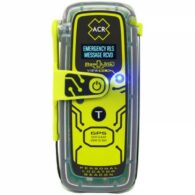
Balise personnelle RESQLINK RLS
La balise de localisation ResQLink RLS disponible avec ou sans écran permet d’émettre un signal de détresse à tout moment et de savoir que celui-ci a été reçu (RLS = RETURN LINK SERVICE).
La balise vous localise grâce au positionnement GPS, signal puissant de 406 MHz et radio guidage sur la fréquence 121,5 MHz. La ResQLink 410 RLS (sans écran) ou la ResQLink View RLS (avec écran) transmet rapidement et précisément votre position à un réseau mondial de satellites de recherche et de sauvetage.
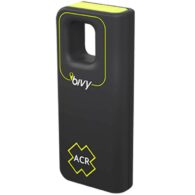
Balise personnelle Bivy Stick
Que vous soyez en pleine mer à bord de votre bateau, en session de pêche en rivière, en randonnée en pleine nature ou en activité sportive loin de tout, vous allez pouvoir transformer votre téléphone portable en appareil de communication par satellite grâce au Bivy Stick !
En tant que leader des produits de sauvetage à usage professionnel et récréatif, le Bivy Stick signé ACR apporte la sécurité et la tranquillité d’esprit d’une communication par satellite abordable et fiable à tout le monde.
Quelle balise de détresse choisir ?
Vous l’aurez maintenant compris, afin d’accroitre votre sécurité en mer, il ne suffit pas d’embarquer le minimum obligatoire, mais il est judicieux de combiner plusieurs dispositifs et surtout de les adapter à votre pratique marine.
Quelle balise de détresse choisir en navigation basique et côtière ?
Dans ces zones de navigation, la balise de détresse n’est pas obligatoire, cependant une avarie peut arriver ou un équipier peut passer par-dessus bord. S’agissant de zones particulièrement fréquentées, vous y croiserez d’autres navires et récepteurs à terre potentiellement à portée.
Dans ce programme de navigation, la balise EPIRB n’est pas obligatoire. Sachant que les secours peuvent intervenir plus rapidement, l’autonomie d’une balise PLB semble suffisante, toutefois le délai de déclenchement d’une opération de sauvetage peut être long.
Dans ce cas de figure, la balise AIS, ou MOB, semble la meilleure option. Les bateaux à proximité équipés d’un récepteur AIS (sur VHF par exemple) peuvent intervenir rapidement.
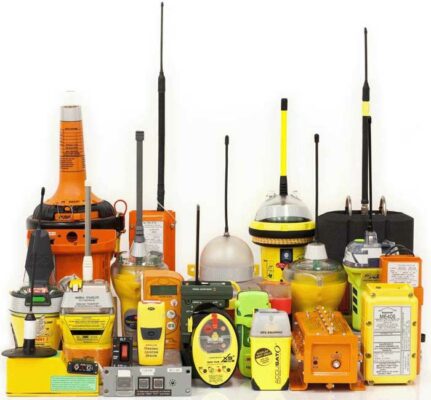
Quelle balise de détresse choisir en navigation semi-hauturière et hauturière ?
Pour rappel, entre 6 milles et 60 milles, nous naviguons en semi-hauturier : la balise n’est pas obligatoire. Elle le devient dès lors que nous dépassons les 60 milles et passons en navigation hauturière. Alors, la balise EPIRB est nécessaire. Avec celle-ci, le signal de détresse peut être reçu quelle que soit votre position sur le globe, y compris aux pôles. Là encore, elle ne doit pas se suffire à elle-même et pourra être complétée par l’utilisation d’une balise personnelle.
Dans ce contexte, nous pourrons mettre en évidence deux cas de figure :
- Vous naviguez en flotte ou en équipage: un système AIS semble particulièrement adapté. Un navire est à moins de 5 milles et peut intervenir avec des informations de géolocalisation GPS précises.
- Vous naviguez en solitaire et vous êtes passé par-dessus bord : des bâtiments capables de recevoir votre signal AIS ne sont pas forcément dans votre zone d’émission, de fait, personne ne recevra votre appel. La balise PLB est alors absolument indispensable.
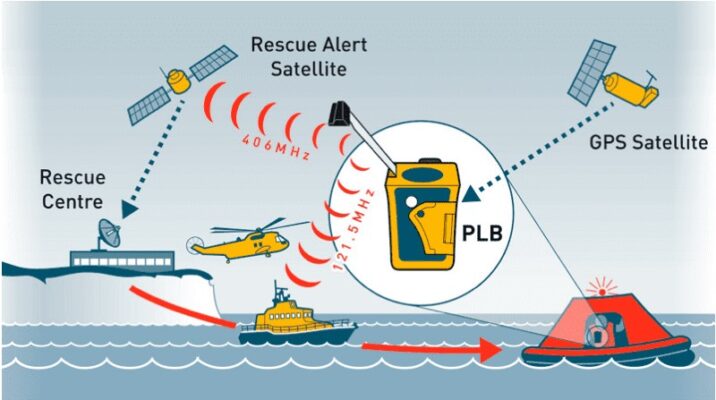
Les balises de détresse chez Comptoir Nautique
Comptoir Nautique, spécialiste et numéro un de l’électronique marine en Europe, vous propose un large choix de balises de détresse. Nous allons ici pouvoir illustrer les quelques configurations que nous avons abordées plus haut.
Balise MOB et système d’alarme AIS
Une balise AIS n’est efficace que si des récepteurs sont à proximité. Dans le cas où le bateau n’est pas équipé d’une VHF AIS, il peut être judicieux d’associer une balise et une alarme. Par exemple, la balise personnelle AIS MOB1 au boîtier d’alarme AIS MOB de chez Ocean Signal. Cet ensemble vous permettra de connecter toutes les balises de votre équipage (jusqu’à 10).
L’alerte homme à la mer sera déclenchée et affichera un signal visuel et sonore permettant d’alerter les occupants du bateau. Un système parfaitement efficace qui pourra se connecter au réseau NMEA, et communiquer avec l’ensemble de votre instrumentation.
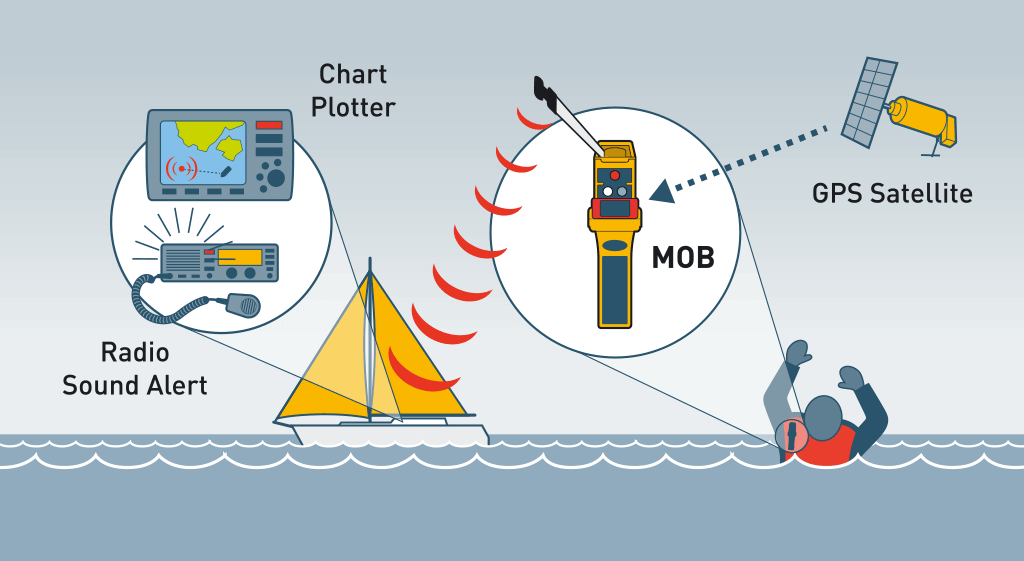
Les meilleures balises de détresse personnelles MOB AIS
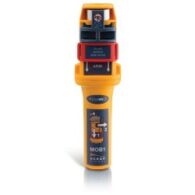
Balise personnelle AIS MOB1
La balise personnelle AIS MOB de Océan Signal vous apporte la sécurité dont vous avez besoin. Compatible avec les gilets de sauvetage, elle s’active au gonflage. Son premier signal d’alerte est émis au bout de 15 secondes. Étanche jusqu’à 10m.
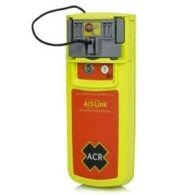
Balise personnelle MOB AIS Link
La balise personnelle ACR AISLink est une aide précieuse au repérage du naufragé via le réseau AIS. A déclenchement manuel ou semi-automatique via le gonflement du gilet, elle assurera la sécurité des équipiers.
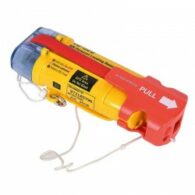
Balise de détresse MOB AIS TB-520
La balise de détresse TB-520 de AMEC peut-être activée soit automatiquement par le capteur d’eau, soit manuellement par le biais d’une manipulation simple et rapide. Dès lors, un message d’alerte est envoyé à tous les récepteurs à proximité avec votre position GPS et un identifiant unique. Le récepteur GPS haute performance de la balise vous permet d’être localisé rapidement et précisément.
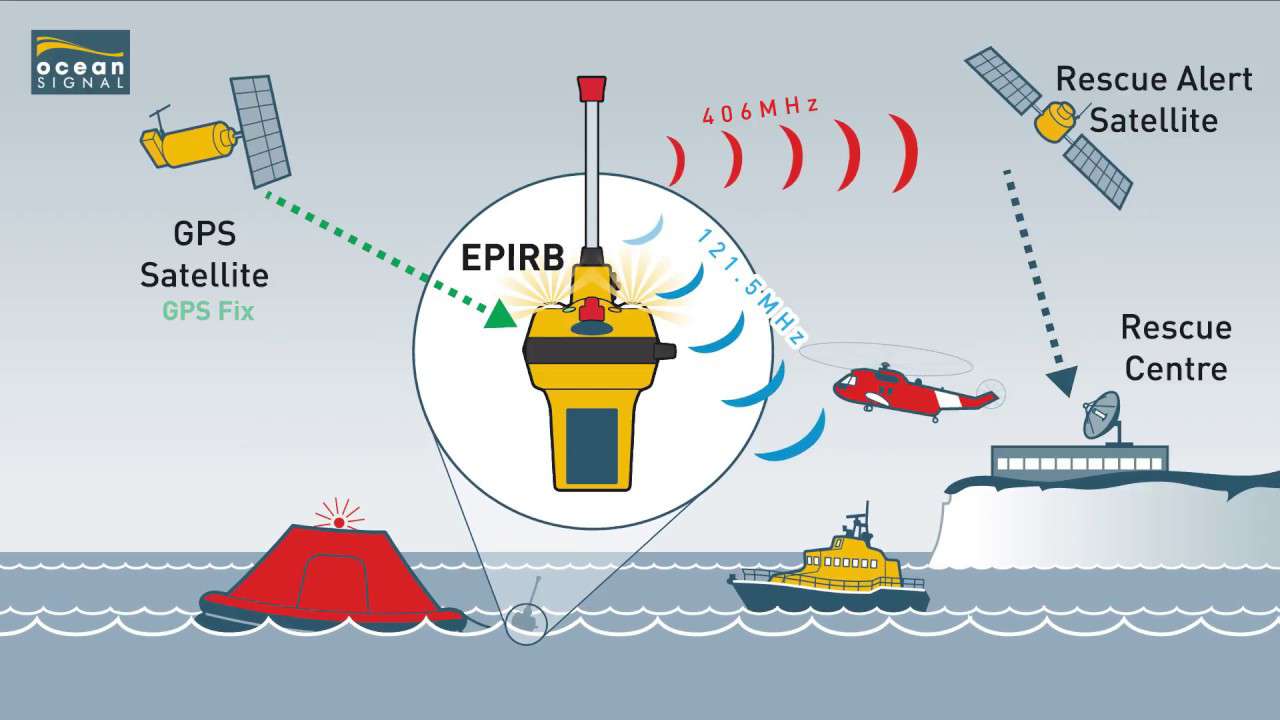
Balise de détresse EPIRB1 Pro + GPS
Pour la navigation au large, la balise de détresse EPIRB prend tout son sens. Cependant les seules émissions sur les fréquences 406 et 121.5 MHz peuvent limiter la rapidité d’intervention des secours. C’est pourquoi nous vous proposons la balise de détresse EPIRB1 PRO avec GPS.
L’adjonction du protocole GPS permet de faire transiter par satellite des données de localisation très précises, permettant ainsi d’éviter la triangulation par plusieurs satellites du programme Cospas-Sarsat. Les secours peuvent être déclencher plus vite.
CONCLUSION
faire son choix
En dehors de l’obligation légale d’emport d’une balise EPIRB au-delà des 60 milles, il est difficile de tirer une règle générale concernant le choix du type de balise que vous devrez embarquer. Cependant nous savons maintenant que ce choix dépend essentiellement de votre programme de navigation et que la multiplicité des dispositifs est la clé d’une sécurité accrue à bord de votre bateau. Il sera donc prudent de prévoir des balises personnelles pour chacun des membres d’équipage, en plus d’une balise fixe.
Notre équipe d’experts reste joignable afin de répondre à toutes vos questions, qu’elles concernent les balises de détresse ou, tout simplement, les prix, le stock disponible, les délais de livraison. Vous retrouverez, bien sûr, les meilleurs tarifs sur comptoirnautique.com.
